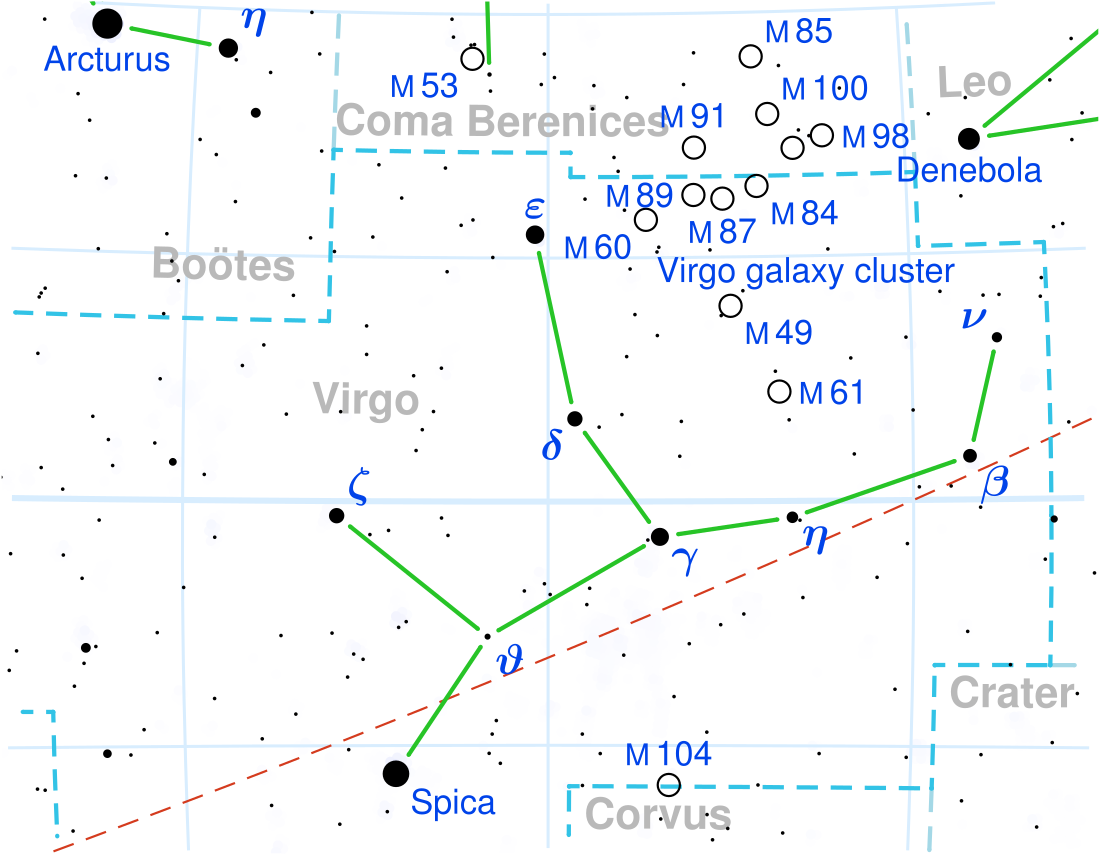Top Qs
Timeline
Chat
Perspective
Phi Virginis
Binary star system in the constellation Virgo From Wikipedia, the free encyclopedia
Remove ads
Phi Virginis (φ Virginis, abbreviated Phi Vir, φ Vir) is a binary star[7] in the zodiac constellation of Virgo. It can be seen with the naked eye, having an apparent visual magnitude of +4.81.[2] Based upon parallax measurements obtained during the Hipparcos mission, it is located roughly 118 light-years (36 parsecs) distant from the Sun.[1]
The two components are designated Phi Virginis A (officially named Elgafar /ˈɛlɡəfɑːr/, the traditional name for the system)[8] and B.
Remove ads
Nomenclature
φ Virginis (Latinised to Phi Virginis) is the binary's Bayer designation. The designations of the two components as Phi Virginis A and B derive from the convention used by the Washington Multiplicity Catalog (WMC) for multiple star systems, and adopted by the International Astronomical Union (IAU).[9]
Ideler described an Arabic lunar mansion "El-ġafr" (Arabic الغفر al-ghafr) for the stars Phi, Iota and Kappa Virginis.[10] In 2016, the IAU organized a Working Group on Star Names (WGSN)[11] to catalog and standardize proper names for stars. The WGSN decided to attribute proper names to individual stars rather than entire multiple systems.[12] It approved the name Elgafar for the component Phi Virginis A on 1 June 2018 and it is now so included in the List of IAU-approved Star Names.[8]
In Chinese, 亢宿 (Kàng Xiù), meaning Neck, refers to an asterism consisting of Phi Virginis, Kappa Virginis, Iota Virginis, and Lambda Virginis.[13] Consequently, Phi Virginis itself is known as 亢宿三 (Wěi Xiù sān), "the Third Star of Neck".[14]
Remove ads
Properties
The primary component, Phi Virginis A, has a stellar classification of G2 IV,[2] indicating that it is a G-type subgiant which is evolving away from the main sequence. It is slightly variable with an amplitude of 0m.06.[15] The star has about 1.8 times the mass of the Sun,[5] 4 times the Sun's radius, and shines with 12.6 times the luminosity of the Sun.[3] It is around 1.5[5] billion years old and is spinning with a projected rotational velocity of 15.5 km/s. The effective temperature of the star's outer atmosphere is 5,534 K.[3]
The secondary, Phi Virginis B, is a magnitude 9.10 companion at an angular separation of 5.160 arcseconds.[7] A second visual companion lies at an angular separation of 91.40 arcseconds along a position angle of 202°, as of 2000.[16]
The system is a source of X-ray emission with a luminosity of 2.158×1020 erg/s.[17]
Remove ads
References
Wikiwand - on
Seamless Wikipedia browsing. On steroids.
Remove ads

